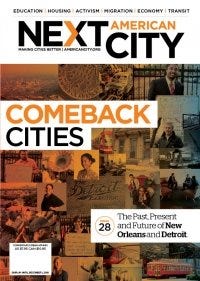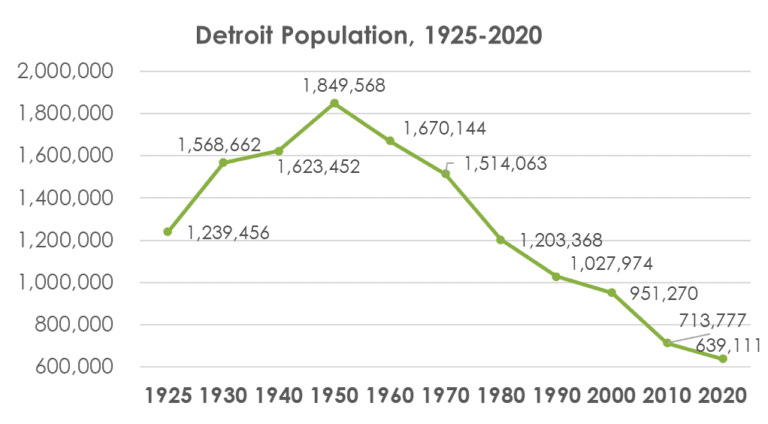Why did Detroit and New Orleans's post-disaster recoveries diverge?
Can NOLA recapture the kind of forward momentum that Detroit now has?
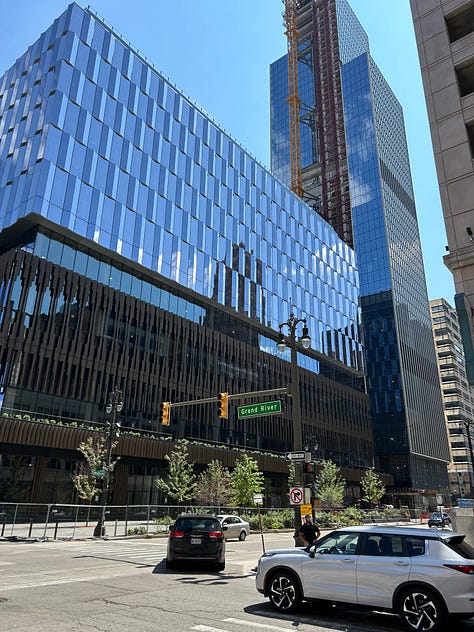
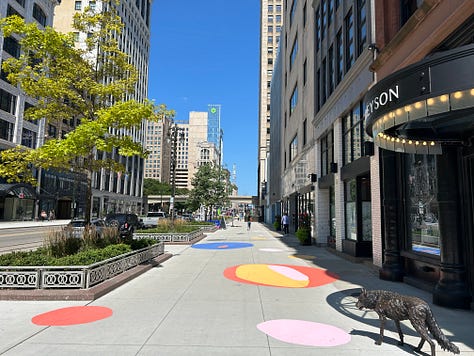
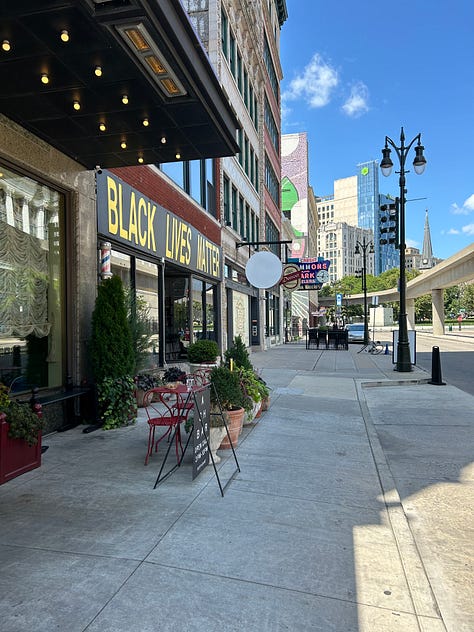
Also: If you regularly enjoy this column and like to support people to do the work they love, please consider upgrading to a paid subscription.
As I researched new developments in Detroit in preparation for the subscriber event happening here this week, I was reminded of an issue of Next American City magazine that we produced called Comeback Cities.
The issue looked at New Orleans and Detroit in 2010, three years before Detroit filed for bankruptcy and five years after Hurricane Katrina. While both cities were staging impressive efforts to revitalize their cities, I recall feeling more optimistic about New Orleans at the time: the city was growing back its population, had a new charismatic mayor in Mitch Landrieu, was planning to take down the Claiborne Expressway, tackling vacant land, seeing progress in a charter school revolution, and as always had a magnetic mix of culture, walkability, college students and more. Detroit was reeling after the 2008 foreclosure crisis, adding to an already overwhelming vacant land problem. Its population decline didn’t seem to be slowing. When I visited New Orleans I was in thrall to its vibrant retail and restaurants; when I visited Detroit, the downtown streetcape was eerily quiet.
So it’s surprising to now look at both cities in 2024 and see Detroit is the one that is growing. Detroit recently announced a population gain of about 2,000 people — its first in decades. And it’s continued to notch a lower crime rate, with the fewest homicides in 57 years. It has invested $1 billion in affordable housing and added an estimated $3 billion in housing equity for Black homeowners. In addition, the downtown that once was so sleepy has seen number of daily residents grow by more than 30 percent since 2019.
By contrast, New Orleans’s population is declining again and high home insurance prices are pushing people out.
What happened? How did these two cities bonded by different kinds of disaster see such divergent trajectories? Below the paywall, I’ll explore:
How population decline and high housing prices posed a problem for New Orleans
How Detroit invested in a new economy while New Orleans focused on hospitality
How New Orleans continues to be dogged by climate disaster and high insurance prices, while Detroit has benefited from big developers and philanthropy.






